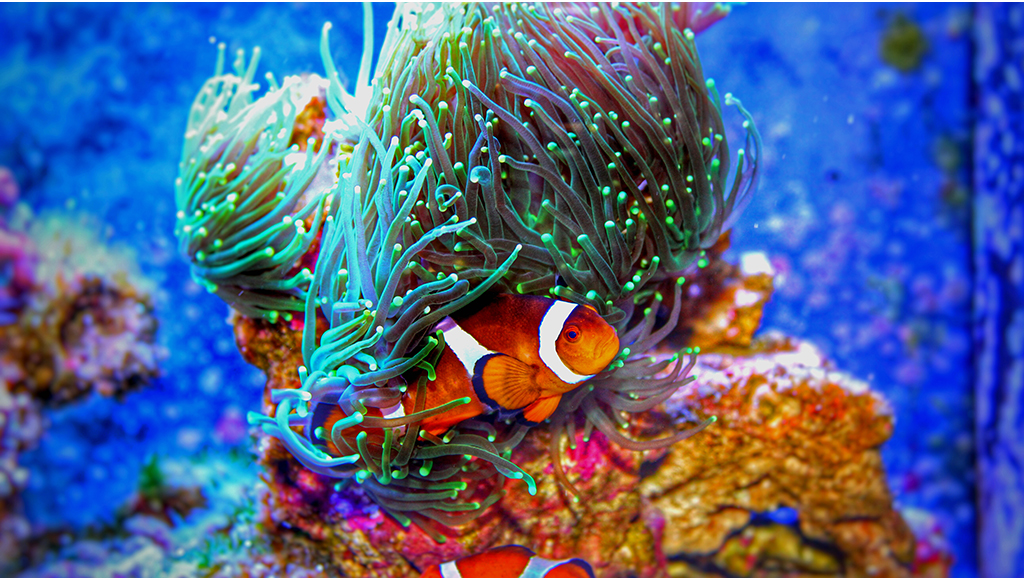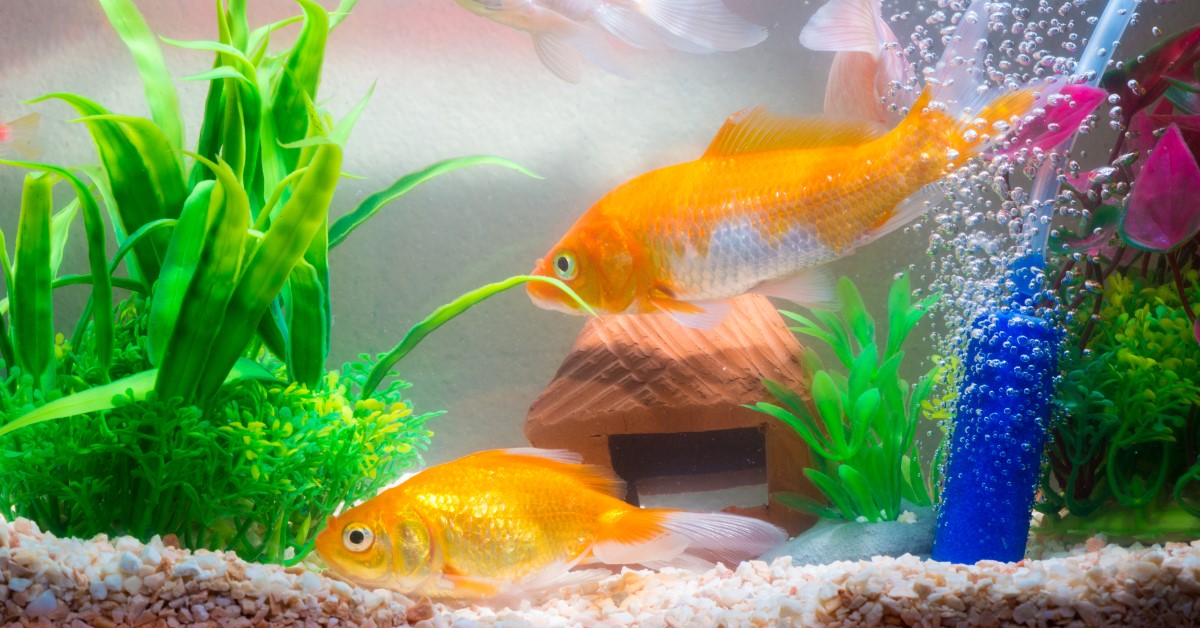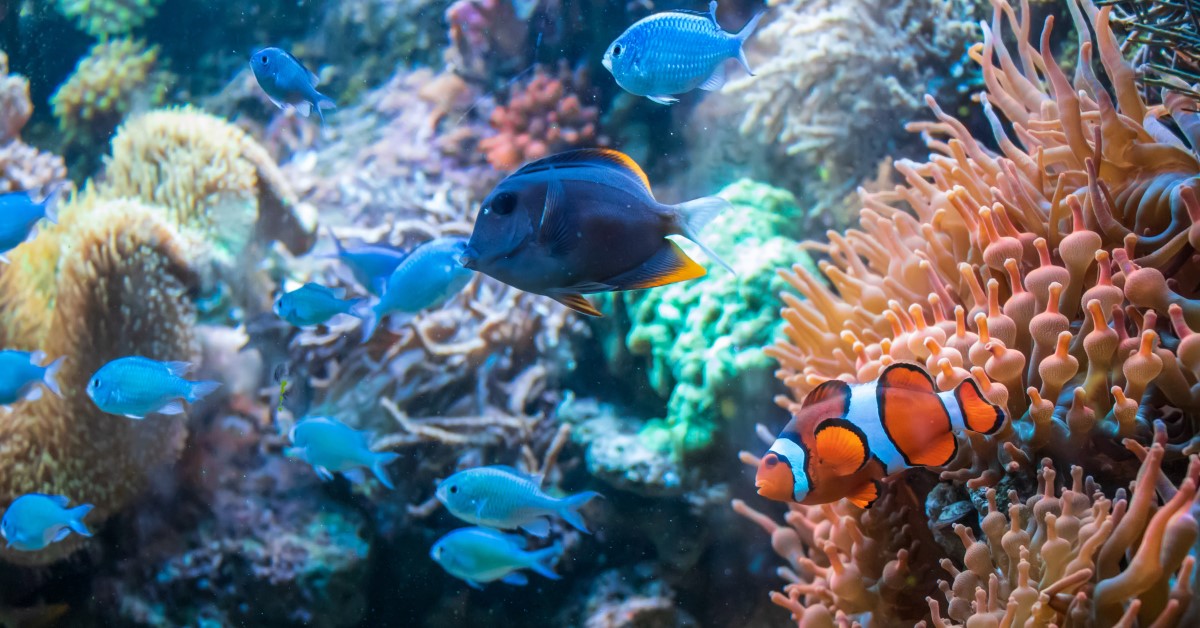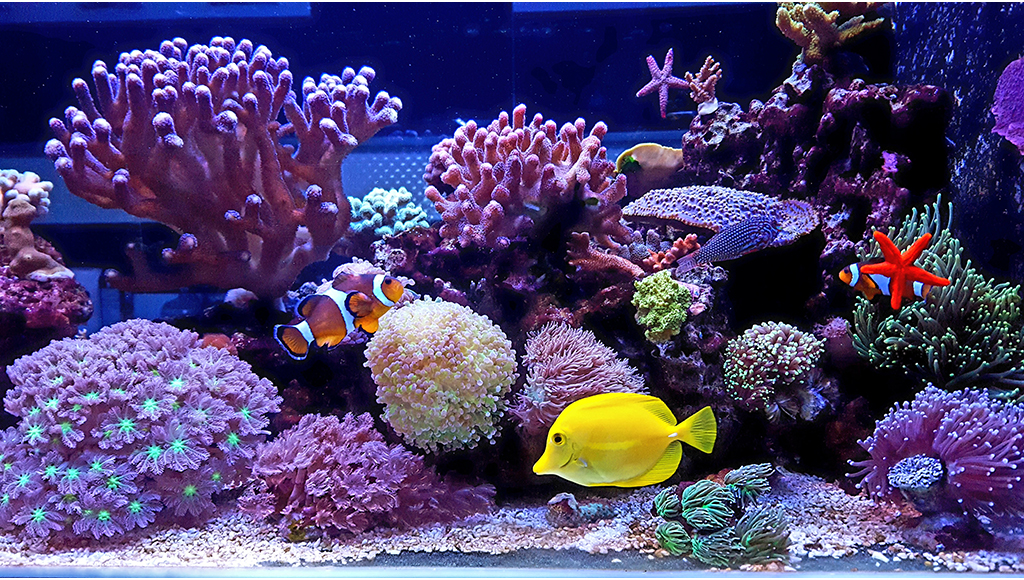Saltwater Aquariums: Part II
Different types of aquariums and their care and cleaning

Saltwater aquariums should generally contain fewer fish than fresh water tanks, because the species tend to grow bigger in size. Marine species may be bred in a captive environment or caught in the wild. Captive bred species are easier to care for and usually hardier than caught species. It generates a great amount of stress for a fish to be captured in the wild and then introduced into an aquarium environment because it is often difficult for them to figure out how to eat. Whenever possible, purchase your fish from a retailer that deals only with breeders or from the breeders themselves.
There are five different types of saltwater aquariums. The first type of saltwater aquarium is the fish only aquarium. This is probably the easiest to care for of the five types, simply because you are only dealing with one type of species. Amongst the saltwater fish there are both tropical and cold water types. They can’t be kept together because the water temperatures vary greatly. Tropical fish are usually brighter in color, and therefore more appealing to aquarium lovers than the fish available in the cold water variety. Most people are somewhat familiar with a few tropical fish such as the Clown fish or the Angel fish; however, few people have heard of such cold water varieties such as the Shanny or the Tompot Blenny
The second type of saltwater aquarium is the invertebrate only aquarium. It is advised that you become skilled with a fish only tank prior to attempting an Invertebrate aquarium. Because there are two distinct types of invertebrates, tropical and cold water, you must make sure that the types you are purchasing are going to be compatible with the other tank mates. These types of aquariums usually consist of shrimp, prawn, hermit crabs and perhaps even a starfish or sea cucumbers.
The required care for an invertebrate only tank is about the same as that of any other saltwater tank; however, the invertebrates are much less hardy than fish. Many require a specialized diet which could cost a bit more, especially if you want to use a fresh food source rather than a freeze dried or frozen one. Inquire with your aquarium supplier before purchasing your tank inhabitants to make sure you have a reliable food source. Some enthusiasts keep a separate tank full of shrimp, mussels and scallops to be used exclusively for food. Be wary though, when keeping shrimp, as they are a food source for most all the invertebrates mentioned above.
When putting together an invertebrate tank, keep in mind to include live rock, as some invertebrates feed on the parasites that grow on the live rock. A substrate should also be added to this type of aquarium as it will provide a location for the crabs and shrimps to dig and bury themselves. A light should also be present if you wish to keep anemones. These aquariums may be less fun to watch as their inhabitants move slowly and sometimes not at all for long periods of time. However, these creatures are fascinating and can create a beautiful underwater environment.
The third type of saltwater aquarium is the fish and invertebrate saltwater aquarium. These are far more difficult to maintain than either of the two categories separately. Certain invertebrates feed on certain fish, and the reverse is also true. Therefore, it is important to research the various species carefully to ensure that you do not put predator and prey together in the same aquarium. Diseases can also spread more rapidly and are more difficult to prevent and cure in aquariums containing both invertebrates and fish species.
The next type of saltwater aquarium is the coral reef aquarium. Reef aquariums can be tricky to maintain and must be thoroughly researched before attempting, even if you consider yourself an advanced aquarium hobbyist. These aquariums can contain only corals, or a combination of corals, anemones, clams, urchins and other inverts that do not move about the tank. This can be very expensive to build and maintain, but can be exciting as you watch these creatures grow and change their environment.
The last category of saltwater aquariums is the specialty aquarium. An example of a specialty aquarium would be an aquarium full of sea horses. Sea horses should not be kept with any other type of fish or marine life, because they are timid and slow eaters. Their food source could easily be taken away by other tank mates no matter what species they may be. Sea horses prefer to swim vertically rather than horizontally, and should be placed in as tall a tank as possible. An octopus and a shark or a ray are other examples of fish that require special needs and would fall into the category of specialty aquariums.
Regardless of which type of saltwater aquarium you choose, it is recommended that you do extensive research on the marine life you want to place in your tank. Make sure you are willing to make the commitment required to care for a saltwater aquarium, as it can be a expensive and a huge challenge balancing the environment so that it is optimal for all the tank’s species with their delicate and sometimes very special needs.
Tips on Care and Cleaning
The adequate care and cleaning of your aquarium is the most crucial, yet most overlooked aspect of owning an aquarium. By neglecting the care and maintenance of a fish tank, it will not only lose its visual appeal, but your fish will be unhealthy and unable to thrive, and may even perish. By following a regular, consistent care program, you will be able to maintain a beautiful, clean and healthy aquarium.
A lot of people are unaware or uninformed of how to adequately clean and care for a saltwater tank. It’s best to find out and fully understand exactly how to care for your saltwater tank even before buying one in order to avoid possible problems after investing your money. The first thing you should be aware of is that you will be required to buy filtered water or buy a reverse osmosis kit. Although you can use regular water, you have to make sure it is the correct temperature and that all chlorine and other undesirable chemicals are completely removed.
Although it is necessary to clean your saltwater tank at least once a month, it is best to try and clean it at least every two weeks. However, do not over clean your tank or you will be taking away some of the beneficial bacteria. In a freshwater tank bacteria can be detrimental, but the opposite is actually true in a saltwater tank to maintain a healthy and balanced environment.
Once a saltwater tank is established and the chemical levels are stable, it will remain that way, and you shouldn’t have to test it even if you do frequently change the water. When cleaning the tank you will need to stir the gravel to remove sediment that could probably change the chemical makeup of the tank. Exercise caution when cleaning an acrylic tank to make sure that cleaning supplies being used will not harm the tank in any way.
The best thing to remove algae is phosphate drops. When added to the water regularly, algae will not be able to build up as quickly. Note that the more light in your aquarium, the more algae will form. Adding some hermit crabs and snails will keep your rocks and tank clean. You will need a scraper or scratch pad to clean the glass. To avoid a salt buildup on the lid of the tank, make sure when you build the tank, that you target the filter head down into the water.
Very simply, the key to maintaining a healthy saltwater aquarium is to keep it clean and algae-free. By keeping in mind the ways to avoid algae, you will be able to keep a healthy aquarium for many years to come.
Ready to start saving money on pet wellness care?
Then take a look at Mint Wellness, the pet wellness plan that provides fast reimbursement on routine pet care. Save on vaccinations, wellness exams, preventatives, dental, and more!
Learn More


